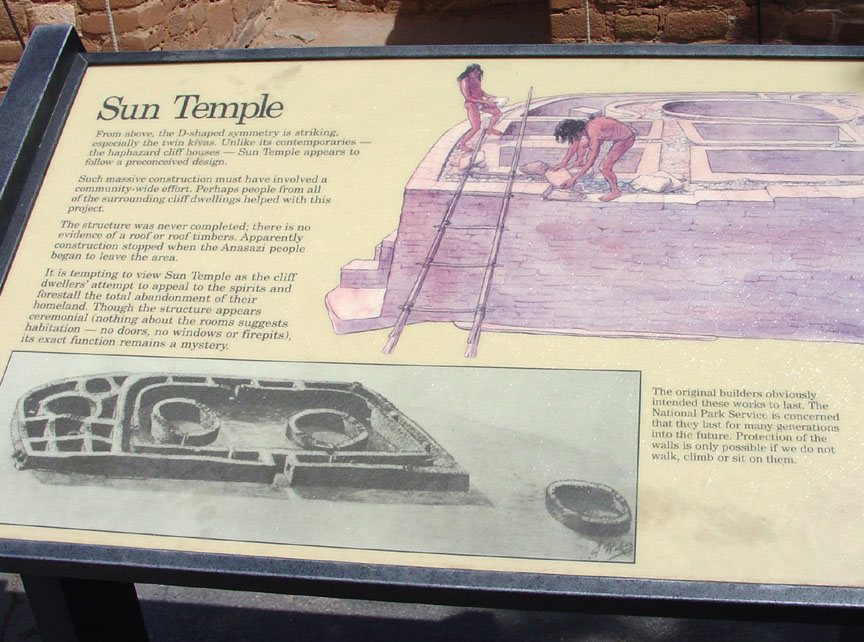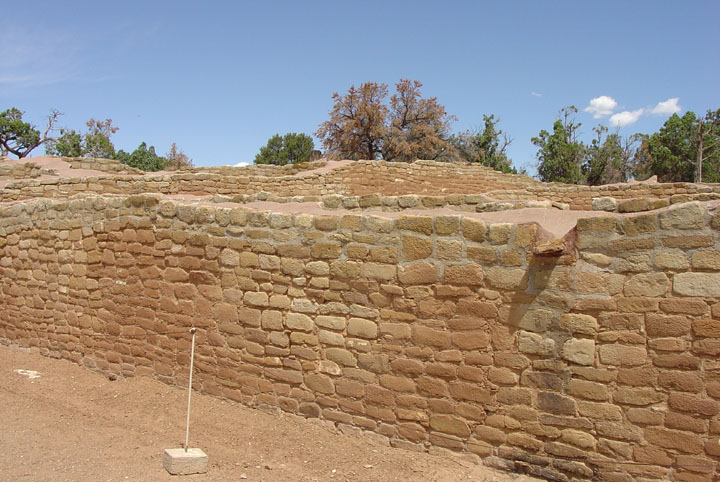

Mesa Verde
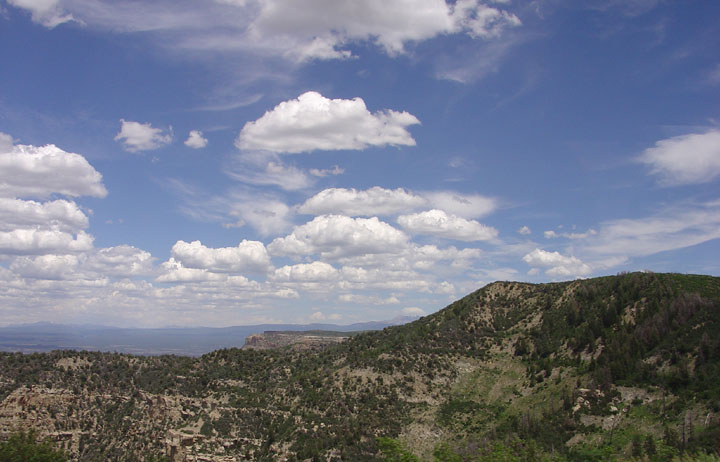
the green hills
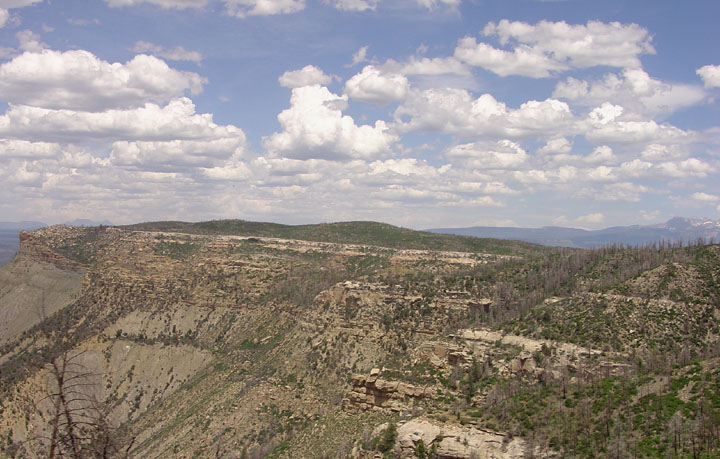
the Green Mesa
The first Ancestral Puebloans settled in Mesa Verde (Spanish for “green table”) about A.D. 550. They are known as Basketmakers because of their impressive skill at that craft. Formerly a nomadic people, they were now beginning to lead a more settled way of life. Farming replaced hunting-and-gathering as their main source of livelihood. They lived in pithouses clustered into small villages, which they usually built on the mesa tops but occasionally in the cliff recesses. They soon learned how to make pottery and they acquired the bow and arrow, a more efficient weapon for hunting than the atlatl (spear thrower).
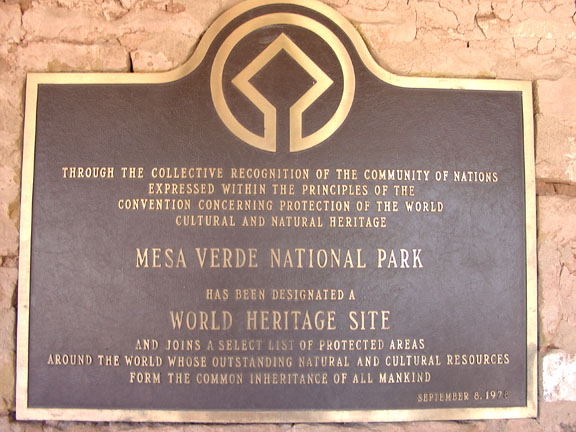
a World Heritage site
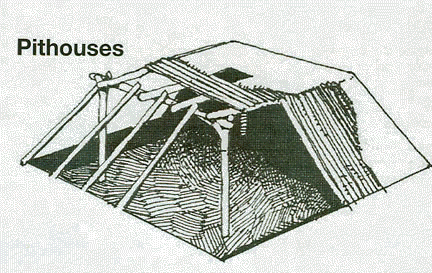
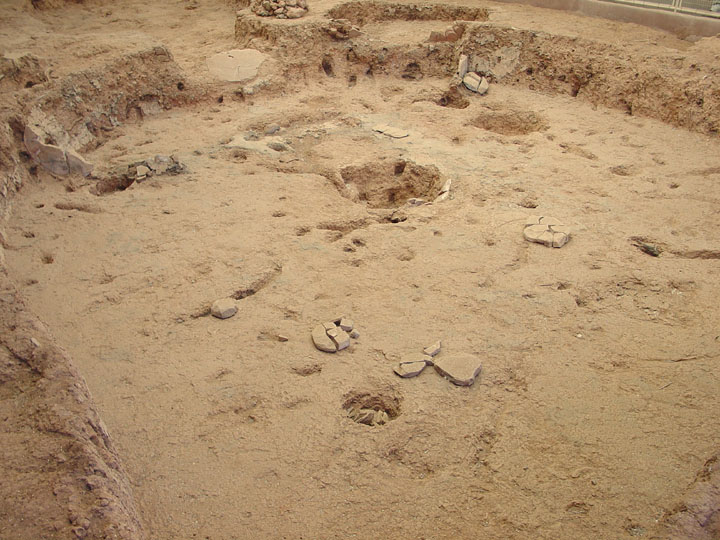
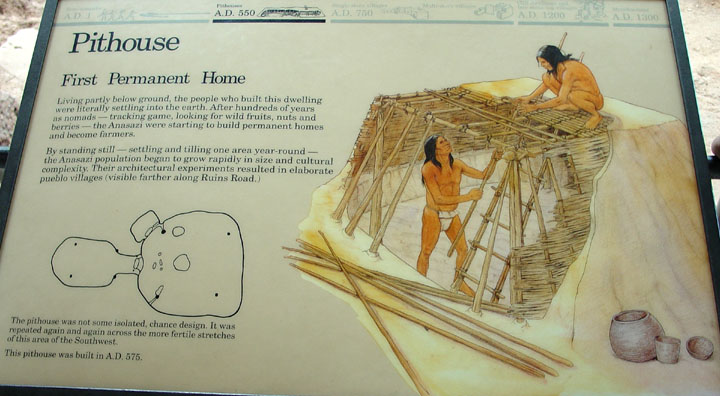
The pithouse represents the beginnings of a settled way of life based on agriculture. Its basic features were a living room, squarish in shape and sunk a few feet into the ground, four main timbers at the corners to support the roof, a firepit with an air deflector, an antechamber, which might contain storage bins or pits, and a sipapu. Pithouses evolved into the kivas of later times. In Mesa Verde, the people lived in this type of dwelling from about 550 to 750.0.

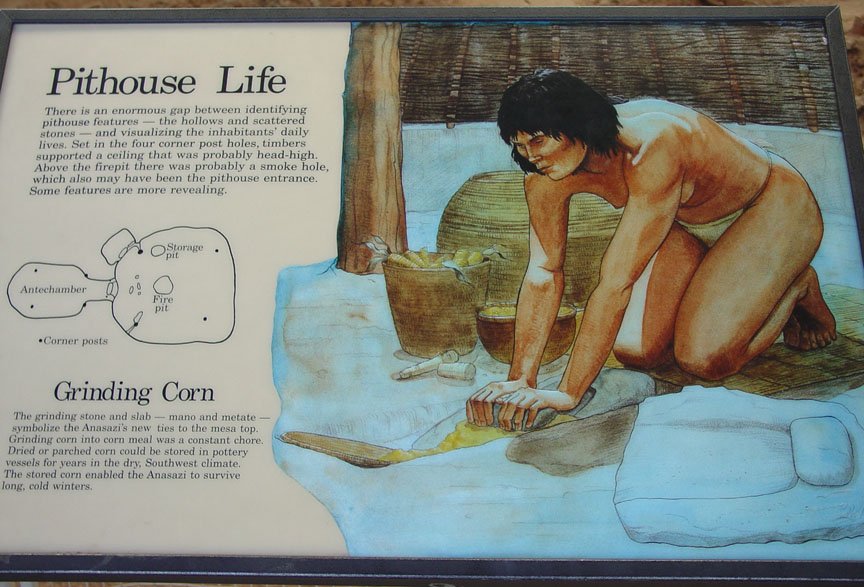
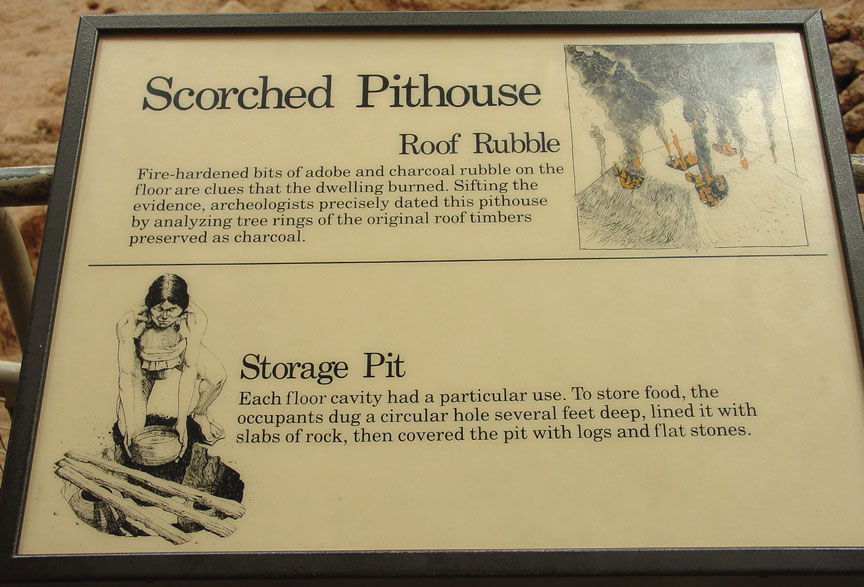
By 1000 the people of Mesa Verde had advanced from pole-and-adobe construction to skillful stone masonry. Their walls of thick, double-coursed stone often rose two or three stories high and were joined together into units of 50 rooms or more. Pottery also changed, as black drawings on a white background replaced simple designs on dull gray. Farming provided more of the diet than before and much mesa-top land was cleared for that purpose.
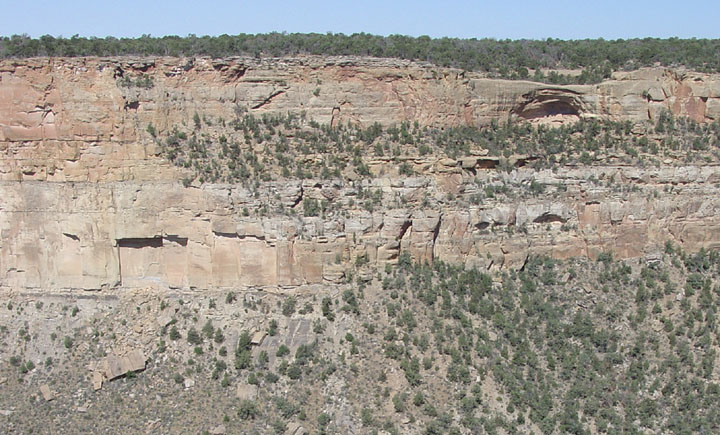
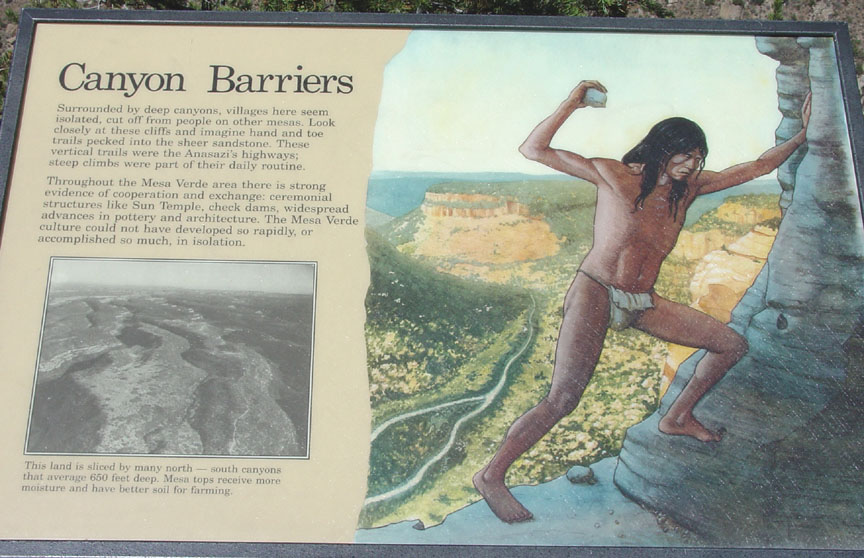
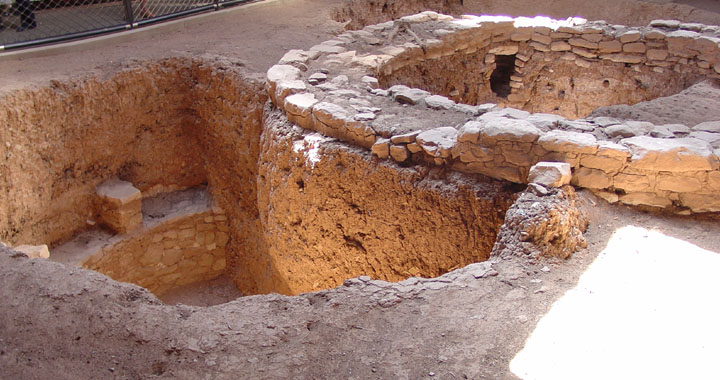

The years from 1100 to 1300 were Mesa Verde’s Classic Period. The population may have reached several thousand. It was mostly concentrated in compact villages of many rooms, often with the kiva built inside the enclosing walls rather than out in the open. Round towers began to appear, and there was a rising level of craftsmanship in masonry work, pottery, weaving, jewelry, and even toolmaking. The stone walls of the large pueblos are regarded as the finest ever built in Mesa Verde; they are made of carefully shaped stones laid up in straight courses. Baskets show evidence of decline in quality but this may be due to the widespread use of pottery and consequent less attention to the craft.
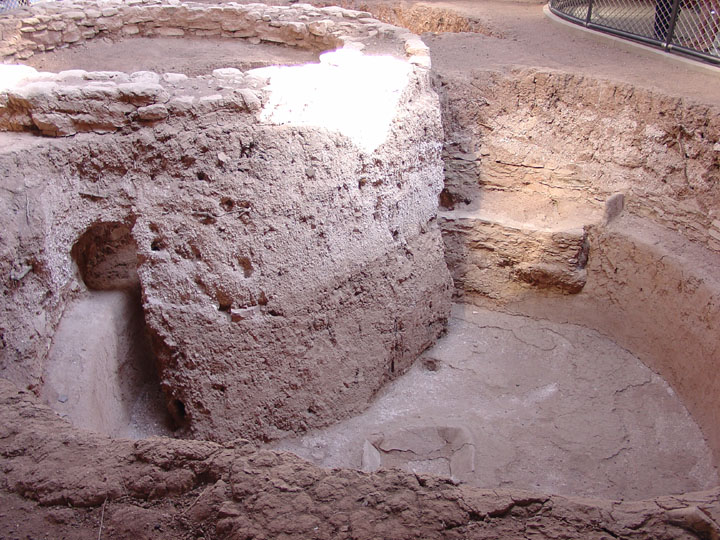
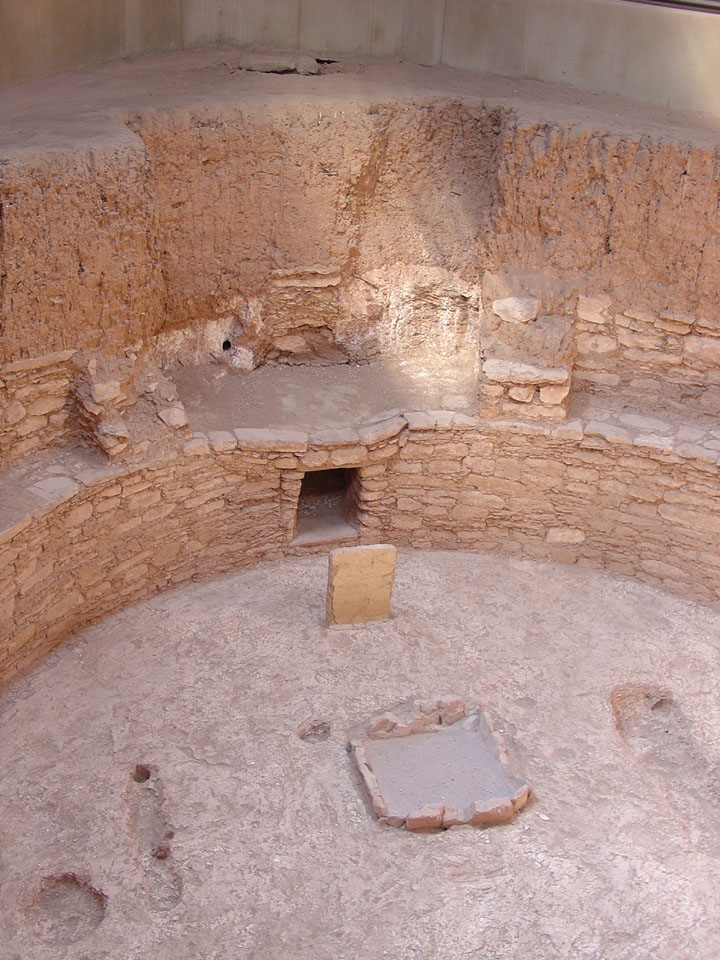
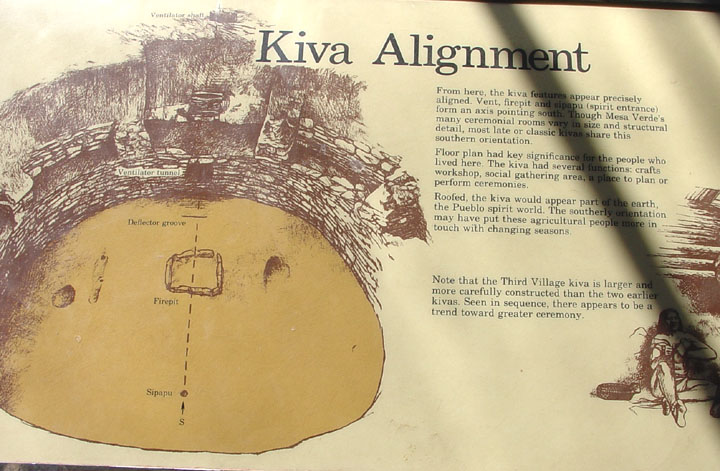
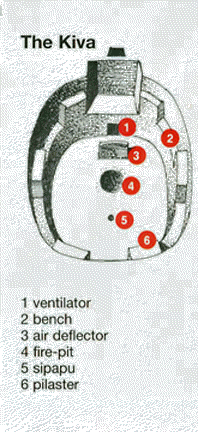
Kiva is a Hopi word for ceremonial room. The kivas at Mesa Verde were underground chambers that may be compared to churches of later times. Based upon modern Pueblo practice, Ancestral Puebloans may have used these rooms to conduct healing rites or to pray for rain, luck in hunting, or good crops. Kivas also served as gathering places, and sometimes as a place to weave. A roof of beams and mud covered each kiva, supported by pilasters. Access was by ladder through a hole in the center of the roof. The small hole in the floor is a sipapu, the symbolic entrance to the underworld.
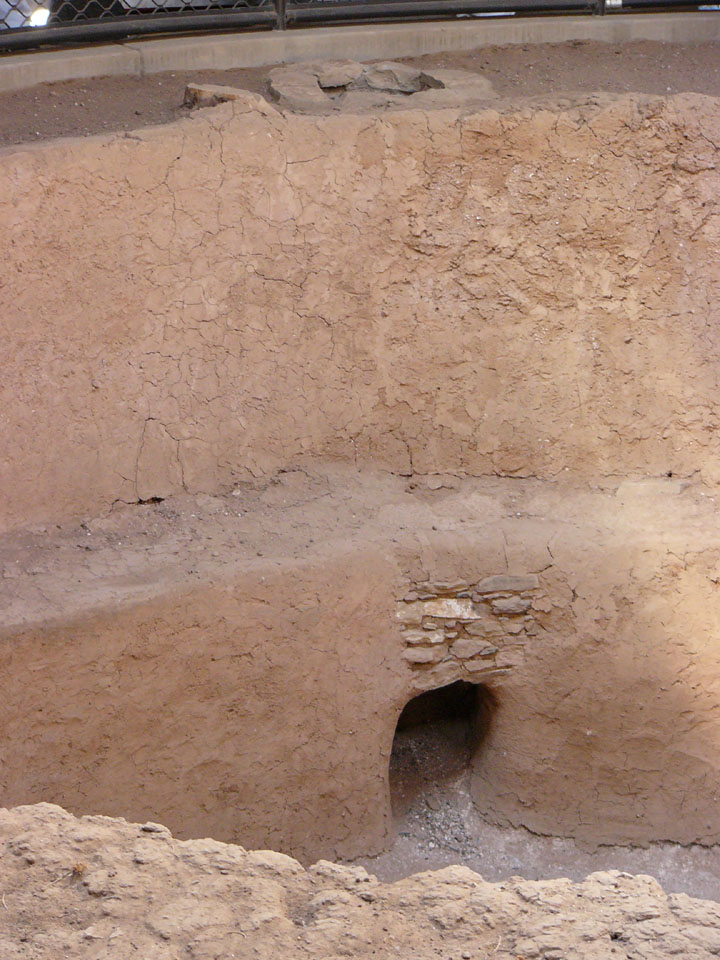
ventilator shaft of the Kiva
About 1200 there was another major population shift. The people began to move back into the cliff alcoves that had sheltered their ancestors long centuries before. We do not know why they made this move. Perhaps it was for defense; perhaps the alcoves offered better protection from the elements; perhaps there were religious or psychological reasons. Whatever the reason or combination of reasons, it gave rise to the cliff dwellings for which Mesa Verde is most famous.
Cliff Palace
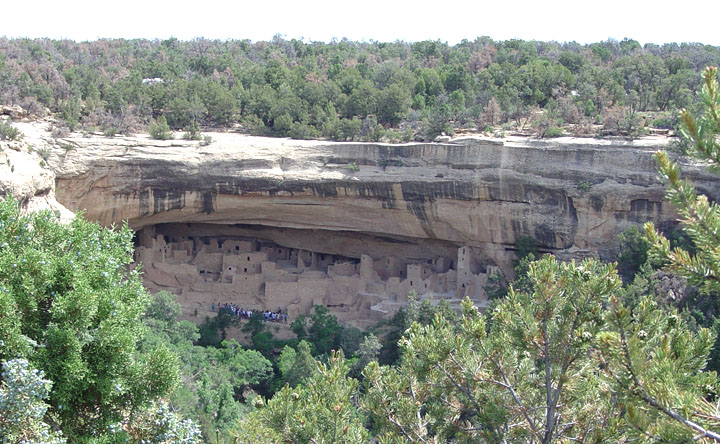
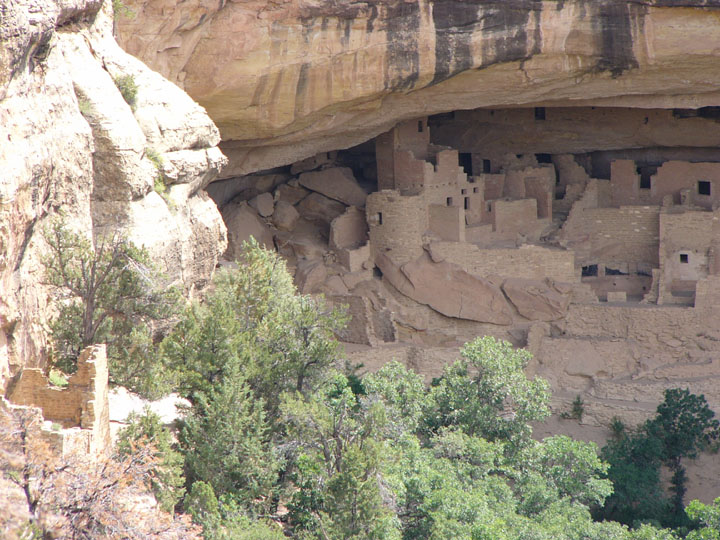
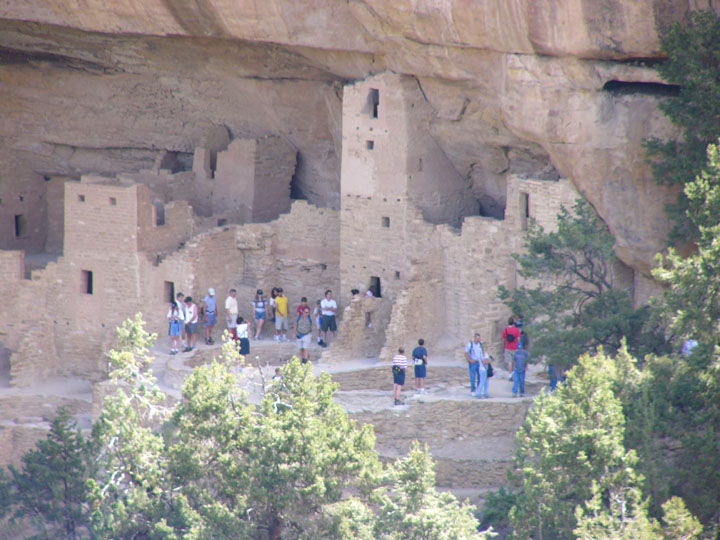
Most of the cliff dwellings were built from the late 1190s to the late 1270s. They range in size from one-room houses to villages of more than 200 rooms— Cliff Palace. Architecturally, there is no standard ground plan. The builders fit their structures to the available space. Most walls were single courses of stone, perhaps because the alcove roofs limited heights and also protected them from erosion by the weather. The masonry work varied in quality; rough construction can be found alongside walls with well-shaped stones. Many rooms were plastered on the inside and decorated with painted designs.
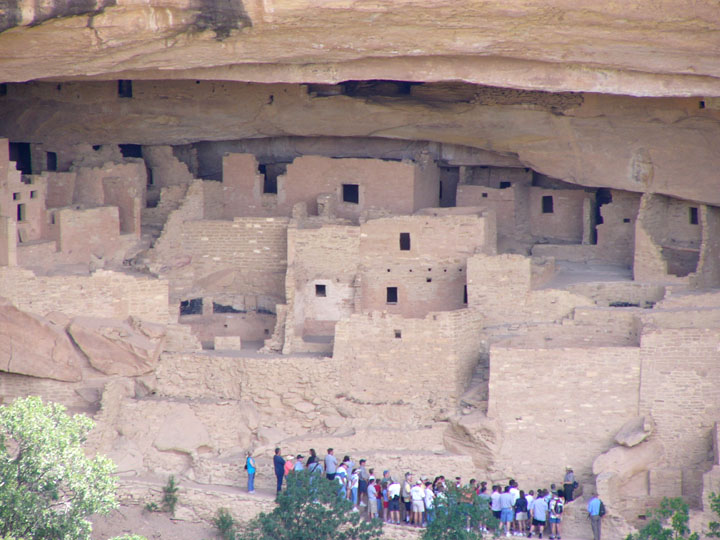

On the Mesa walls the alcoves are formed
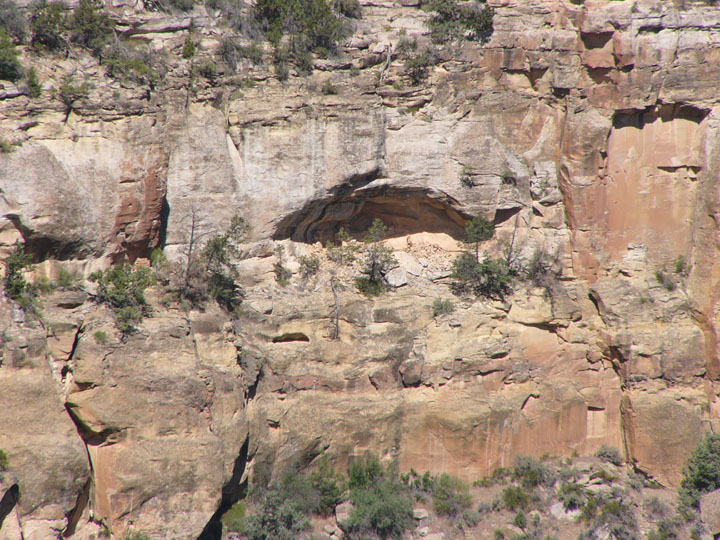
The Ancestral Puebloans lived in the cliff dwellings for less than 100 years. By about 1300 Mesa Verde was deserted. There are several theories about the reasons for their migration. We know that the last quarter of the century was a time of drought and crop failures, but these people had survived earlier droughts. Maybe after hundreds of years of intensive use the land and its resources—the soil, the forests, and the animals—were depleted. Perhaps there were social and political problems, and the people looked for new opportunities elsewhere.
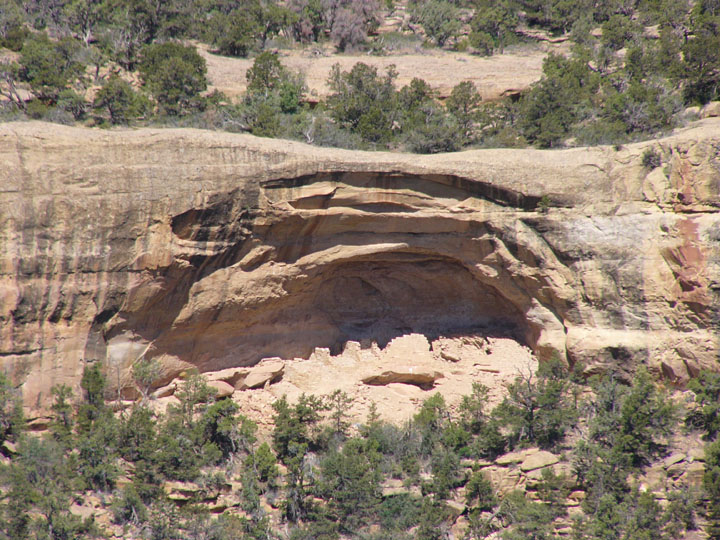
When the people of Mesa Verde left, they traveled south into New Mexico and Arizona, settling among their kin already there. Whatever happened, some of today’s Pueblo people, and perhaps other tribes, are descendants of the cliff dwellers of Mesa Verde.
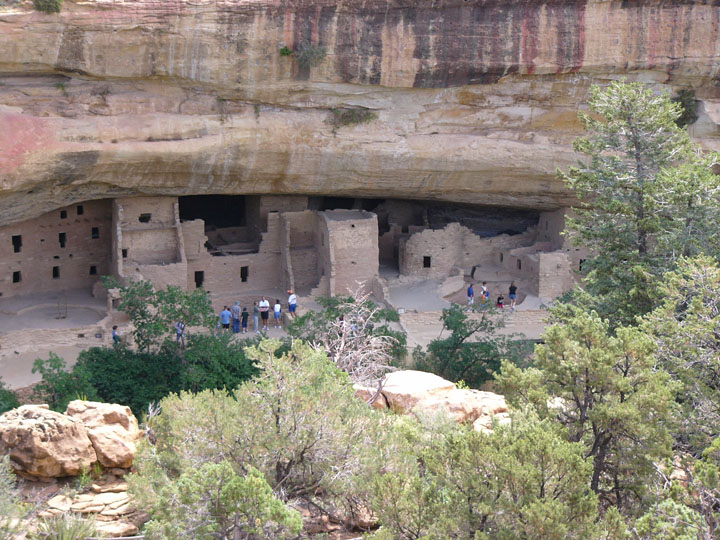
Spruce Tree House
More Photos of Spruce Tree House
Sun Temple

